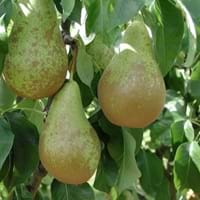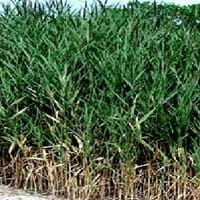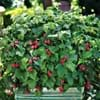Life Span
Perennial
Perennial
Origin
Europe, Western Asia
Southern Europe
Types
Not Available
Arundo, Carrizo
Number of Varieties
Not Available
Habitat
Dappled Shade, Sunny Edge, Woodland Garden Secondary
Saline Soils, Sandy areas
USDA Hardiness Zone
5-9
6-10
Sunset Zone
2a, 2b, 3a, 3b, 4, 5, 6, 7, 8, 9, 14, 15, 16, 17, 18
3a, 3b, 4, 5, 6, 7, 8, 9, 10, 11, 12, 13, 14, 15, 16, 17, 18, 19, 20, 21, 22, 23, 24
Habit
Oval or Rounded
Upright/Erect
Flower Color
White
Not Available
Flower Color Modifier
Bicolor
Bicolor
Fruit Color
Yellow, Red, Yellow green
Not Available
Leaf Color in Spring
Dark Green
Green, Gray Green
Leaf Color in Summer
Dark Green
Light Green
Leaf Color in Fall
Purple, Dark Green, Burgundy
Green, Gray Green
Leaf Color in Winter
Light Green
Green, Gray Green
Leaf Shape
Elliptic
Linear
Plant Season
Spring, Summer, Fall
Spring, Summer, Fall, Winter
Sunlight
Full Sun
Full Sun
Growth Rate
Medium
Very Fast
Type of Soil
Clay, Loam, Sand
Clay, Loam, Sand
The pH of Soil
Neutral
Acidic, Neutral, Alkaline
Soil Drainage
Well drained
Average
Bloom Time
Spring
Late Summer, Early Fall, Fall, Late Fall
Tolerances
Drought
Wet Site, Drought, Salt
Where to Plant?
Container, Ground
Ground
How to Plant?
Seedlings
From Rhizomes, Stem Planting
Plant Maintenance
Medium
Medium
Watering Requirements
Average Water Needs
Requires a lot of watering
In Summer
Lots of watering
Lots of watering
In Spring
Moderate
Moderate
In Winter
Average Water
Average Water
Soil pH
Neutral
Acidic, Neutral, Alkaline
Soil Type
Clay, Loam, Sand
Clay, Loam, Sand
Soil Drainage Capacity
Well drained
Average
Sun Exposure
Full Sun
Full Sun
Pruning
Remove damaged leaves, Remove dead branches, Remove dead leaves
Do not prune during shooting season, Prune after harvesting, Remove damaged leaves, Remove dead branches, Remove dead leaves
Fertilizers
All-Purpose Liquid Fertilizer
All-Purpose Liquid Fertilizer, Fertilize in early spring
Pests and Diseases
Bacterial Diseases, Black rot, Fungal Diseases
Not Available
Plant Tolerance
Drought
Drought
Flower Petal Number
Single
Single
Foliage Texture
Medium
Bold
Foliage Sheen
Glossy
Matte
Attracts
Birds, Butterflies
Bees, Birds, Hummingbirds
Allergy
Mouth itching, Throat itching
allergic conjunctivitis, flushing of face, wheezing
Aesthetic Uses
Showy Purposes
Beautification, Bonsai
Beauty Benefits
Not Available
Making cosmetics, Skin cleanser
Edible Uses
Yes
Sometimes
Environmental Uses
Air purification
Agroforestry, Air purification, Nesting sites for birds, No fertilizer, pesticides, or herbicides needed, Prevent Soil Erosion, Shadow Tree, soil stabilisation
Medicinal Uses
Astringent, Febrifuge, Sedative
Diaphoretic, Diuretic, Emmoiliant
Part of Plant Used
Fruits
Bark, Sap
Other Uses
Used As Food
Basketary, Showy Purposes, Used in making musical instruments, Wood is used in construction
Used As Indoor Plant
No
Sometimes
Used As Outdoor Plant
Yes
Yes
Garden Design
Edible, Fruit / Fruit Tree, Topiary / Bonsai / Espalier
Container, Cutflower, Dried Flower/Everlasting, Feature Plant, Mixed Border, Screening / Wind Break, Tropical, Water Gardens
Botanical Name
Pyrus Communis
ARUNDO donax
Common Name
Dessert Pear, Forelle Pear, Forellenbirne, Pear
Giant Reed
In Hindi
Forelle Pear
नरकट
In German
Forelle Pear
Pfahlrohr
In French
Forelle Pear
Arundo donax
In Spanish
Forelle Pear
Arundo donax
In Greek
Forelle Pear
Arundo donax
In Portuguese
Forelle Pear
Cana-do-reino
In Polish
Forelle Pear
Lasecznica trzcinowata
In Latin
Forelle Pear
Arundo donax
Phylum
Magnoliophyta
Angiosperms
Class
Magnoliopsida
Liliopsida
Clade
Angiosperms, Eudicots, Rosids
Commelinids
Tribe
Not Available
Not Available
Subfamily
Not Available
Not Available
Number of Species
Not Available
Season and Care of Forelle Pear and Giant Reed
Season and care of Forelle Pear and Giant Reed is important to know. While considering everything about Forelle Pear and Giant Reed Care, growing season is an essential factor. Forelle Pear season is Spring, Summer and Fall and Giant Reed season is Spring, Summer and Fall. The type of soil for Forelle Pear is Clay, Loam, Sand and for Giant Reed is Clay, Loam, Sand while the PH of soil for Forelle Pear is Neutral and for Giant Reed is Acidic, Neutral, Alkaline.
Forelle Pear and Giant Reed Physical Information
Forelle Pear and Giant Reed physical information is very important for comparison. Forelle Pear height is 370.00 cm and width 300.00 cm whereas Giant Reed height is 18.00 cm and width 150.00 cm. The color specification of Forelle Pear and Giant Reed are as follows:
Forelle Pear flower color: White
Forelle Pear leaf color: Dark Green
Giant Reed flower color: Not Available
- Giant Reed leaf color: Green and Gray Green
Care of Forelle Pear and Giant Reed
Care of Forelle Pear and Giant Reed include pruning, fertilizers, watering etc. Forelle Pear pruning is done Remove damaged leaves, Remove dead branches and Remove dead leaves and Giant Reed pruning is done Do not prune during shooting season, Prune after harvesting, Remove damaged leaves, Remove dead branches and Remove dead leaves. In summer Forelle Pear needs Lots of watering and in winter, it needs Average Water. Whereas, in summer Giant Reed needs Lots of watering and in winter, it needs Average Water.





